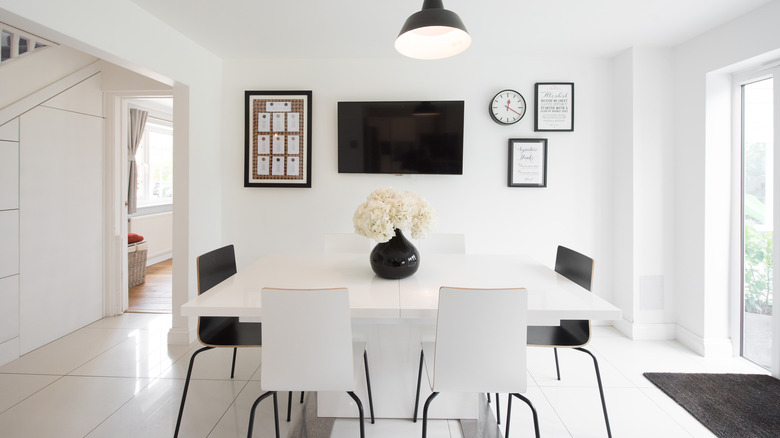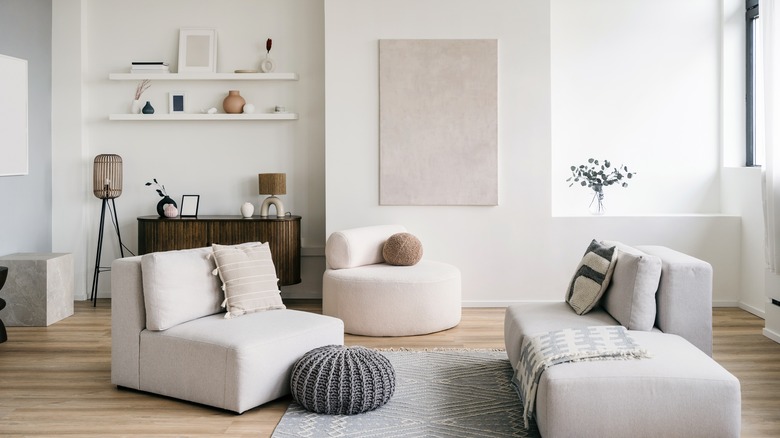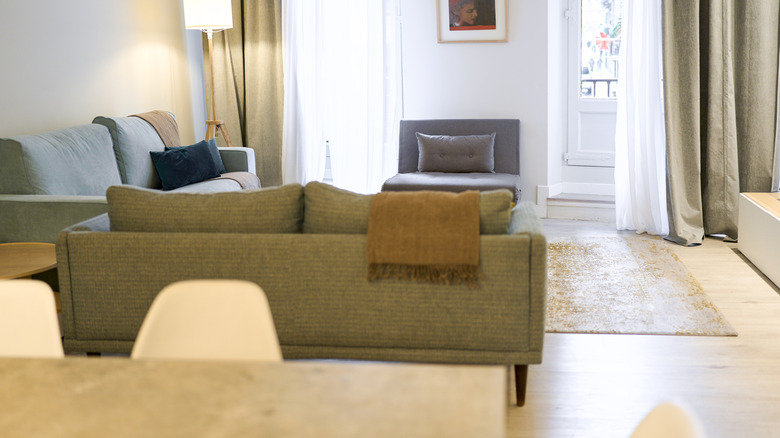The Disappointing Downsides To Embracing Minimalist Decor
Minimalist décor is all the rage these days. It's clean, simple, and screams, "I've got my life together." The idea of ditching clutter and keeping just the essentials has taken over Instagram feeds and Pinterest boards everywhere. After all, who doesn't want to live in a house that looks like it belongs in a design magazine? But before you start throwing out everything, painting your walls plain white, or embracing this minimalist trend that is dominating in 2025, let's pause for a reality check. Minimalism might seem like the perfect solution to make your home feel more modern and stress-free, but as with most things, it's not all sunshine and perfectly-folded blankets.
But first, what is minimalist décor? Minimalist décor is all about creating a sense of calm by cutting back on the extra stuff. Think neutral color palettes, sleek furniture, and a near-empty room with only a vase or a lone book to add "character." The idea is to create an uncluttered space that makes you feel peaceful. Minimalism is mostly praised for its practicality — less stuff means less to clean, less to organize, and less to worry about. But before you Marie Kondo your way into an empty home, it's worth noting that minimalism isn't for everyone. Minimalism may not work so well if you have a larger space, love hosting guests, or want your home to feel warm and inviting.
Why minimalism might not be all it's cracked up to be
First up, minimalism can make your place feel like a museum -– empty, echoey, and kind of sad. If you're working with a larger home or spacious apartment, embracing minimalism can make your place feel like a cavern. Walking through a sparsely-furnished room might give you that echo effect, which is great for sound testing but not so great for cozy movie nights. Large homes need a little more warmth to feel inviting. Minimalism struggles to provide that, leaving your space looking like an expensive furniture showroom.
Then there's the issue of entertaining guests. Minimalist décor prioritizes form over function, which sounds nice until you're scrambling to figure out where people will sit. Most minimalist furniture ideas lean toward sleek and compact designs, but that doesn't always translate to comfort. You might have to bring in those clunky folding chairs you've hidden away (which totally ruins the minimalist aesthetic) or risk leaving someone standing.
Finally, the overall vibe of minimalism can feel a little, well, soulless. It leaves your house looking clean and polished, but does it feel like you? When you strip away all the personal touches –- family photos, souvenirs, and even those weird knick-knacks you secretly love -– it can start to feel impersonal. Minimalism's love for neutral colors doesn't help either. All those whites, grays, and beiges might be calming, but they can also come across as cold and boring. Your house is supposed to reflect your personality. If everything feels too curated and restrained, it can start to feel like you're living in someone else's house.
How to achieve a balanced look in your home
But what if you still want to make minimalism work with a little more pizzazz? It's all about finding a balance. You don't have to throw out your minimalist aspirations entirely, but you can add some personal touches to make your home feel more welcoming. One tip is to mix different textures in your décor. For example, a minimalist couch paired with a fluffy wool rug can make the room feel inviting without going overboard. Mixing hard and soft textures adds depth to the space while maintaining the clean lines you love about minimalism.
Another helpful tip is to balance functionality and aesthetics. Minimalism may prioritize clean, open spaces, but that doesn't mean you can't add pieces that serve a purpose. Think about incorporating multi-functional furniture, like a coffee table that doubles as extra storage or a bookshelf that can act as a room divider. The key is to add items that are both beautiful and practical. This way, you can create a space that looks good and works well for your daily life.
And finally, let's talk about color. Minimalist décor often sticks to muted tones, but if your space is a little too bland, introducing color in moderation can make a huge difference. You don't have to fill every wall with vibrant hues, but adding accent colors in pillows, vases, or a statement wall can inject life into your space. The trick is to balance these pops of color so they complement your minimalist pieces instead of overwhelming them.


